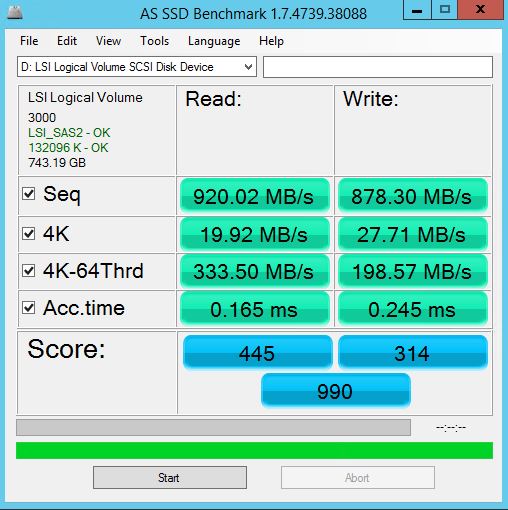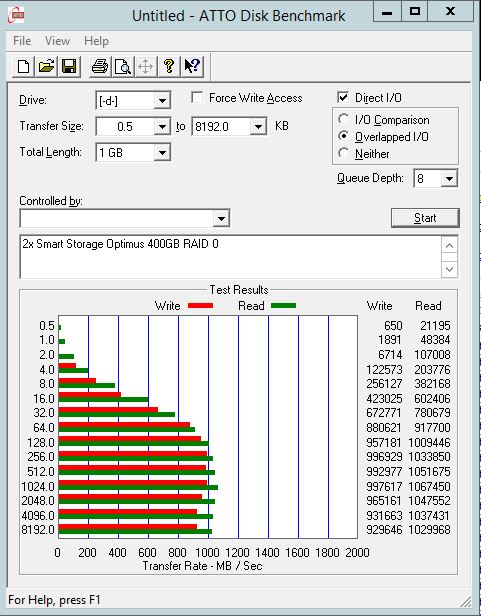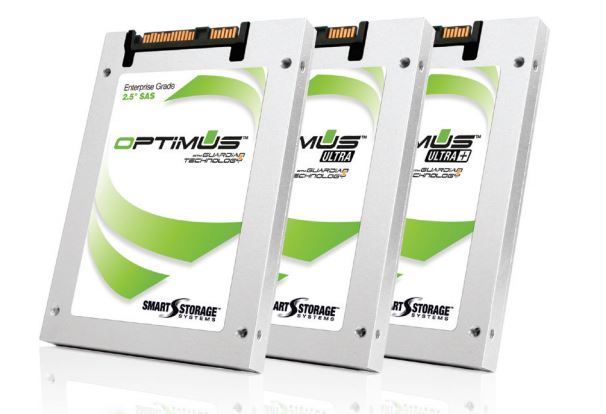Today we are continuing our benchmarking series with SAS SSDs we have acquired for prices between $0.55- $0.60/ GB. We have two SanDisk Optimus 400GB MLC SAS SSDs in the test rig in RAID 0. We did a longer discussion regarding how the Optimus line of SSDs was part of SanDisk’s acquisition of Smart Storage Systems and that these MLC drives target faster read speeds. SAS SSDs tend to be higher-end devices and are typically a poor mix for even most workstation environments. What we have found in our “quick and dirty” testing to date is that some of the SAS SSDs are performing better than expected in RAID 0 arrays where data is striped across two drives instead of one. Most of these drives are intended for enterprise RAID arrays so there is a working hypothesis that these drives may be optimized for RAID workloads.
We are continually growing this data set but here are the benchmark runs thus far:
Single SAS SSD Benchmarks
- Pliant/ SanDisk Lightning 206s 200GB SLC SAS SSD benchmarks
- Seagate Pulsar.2 200GB MLC SAS SSD benchmarks
- Pliant/ SanDisk Lightning 406s 400GB SLC SAS SSD benchmarks
- Smart Storage System/ SanDisk Optimus 400GB MLC SAS SSD benchmarks
2 Drive RAID 0 Benchmarks
Our goal is to continue posting one more per week in-between other articles. We are also working on being able to add NVMe based SSDs to this as a comparison to state-of-the-art NAND storage. More on that shortly.
Test Configuration
Since we are going to assume the use of already released hardware, we are using a legacy system for testing across the test suite:
- Motherboard: Gigabyte GA-7PESH3
- Processors: Dual Intel Xeon E5-2690 (V2)
- SAS Controller: (onboard LSI SAS2008 in IR mode)
- RAM: 64GB DDR3L-1600MHz ECC RDIMMs
- OS SSD: Kingston V300 240GB
We did not use our Intel Xeon E5-2600 V3 platforms because this series started prior to the embargo being lifted on that platform. The Gigabyte’s LSI controller found onboard is the same as can be found in countless platforms and cards such as the IBM ServeRAID M1015 and LSI 9211-8i. We decided to use this controller since it is an extremely popular first-generation 6gbps SAS II controller. For those looking to build value SAS SSD enabled arrays, the LSI SAS2008 is likely going to be the go-to controller. A major point here is that we are using a SAS controller. This means that one cannot compare results directly to consumer-driven setups where a SATA SSD is connected to an Intel PCH port. There is a latency penalty for going over the PCIe bus to a controller to SAS. It also is a reason NVMe is going to be a game changer in the enterprise storage space.
Controller wise, the LSI SAS 2008 controller has plenty of headroom for this configuration. We do have the drives working with a LSI SAS3008 controller on an Intel Grantley-EP platform and may use these for the more in-depth testing. This will be especially important if we are able to include NVMe results showing a current data point versus these aging SAS drives.
SanDisk Optimus 400GB MLC SAS SSD Quick Benchmarks
For our quick tests during this part of the series we will just provide the quick benchmarks with only a bit of commentary. The results should be fairly straightforward and the index of previous articles in this series (linked above) is a good resource to compare against.
AS SSD Benchmark
AS SSD is a solid benchmark that does not write compressible data to drives. The result is perhaps one of the best workstation SSD benchmarks available today.

Overall we are seeing a trend with these MLC drives performing better than most of our other SAS SSDs. We saw this on the single drive tests and again here. These improvements are generally in-line with typical RAID 0 scaling with SATA drives.
CrystalDiskMark
CrystalDiskMark is another benchmark which gives non-compressible read/write numbers. This is in contrast to the ATTO Benchmark used by LSI/ Sandforce and its partners when they market a given solid state drive.

These results look similar to the scaling we see from consumer SSD drives. Results in general are lower than 100% scaling we have seen in some of the other cases. The 4K QD32 write results show slightly more than a 2x performance improvement over the single drive (108.3MB/s.)
ATTO Benchmark
The value of the ATTO benchmark is really to show the best-case scenario. ATTO is known to write highly compressible data to drives, which inflates speeds of controllers that compress data like LSI/ SandForce does prior to writing on a given solid state drive.

Finally, a quick benchmark showing over 1GB/s in read speeds. Interestingly enough there is a more pronounced write speed fall-off over the 2048 test than in the single disk results. Double the single disk speeds would have meants 1.1GB/s os this is a bit slower than we would ideally like to see.
Conclusion
In many ways the SanDisk Optimus SAS SSDs perform similar to how we would expect standard higher-performance SATA drives to perform, perhaps a bit better, and certainly better in steady-state (more on that in another piece.) Compared to the SanDisk Lightning (Pliant based) and Seagate Pulsar.2 drives the Optimus drives are considerably faster. More to come in the series soon.




